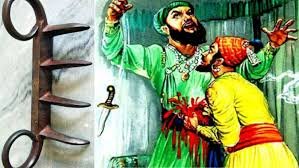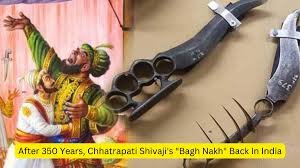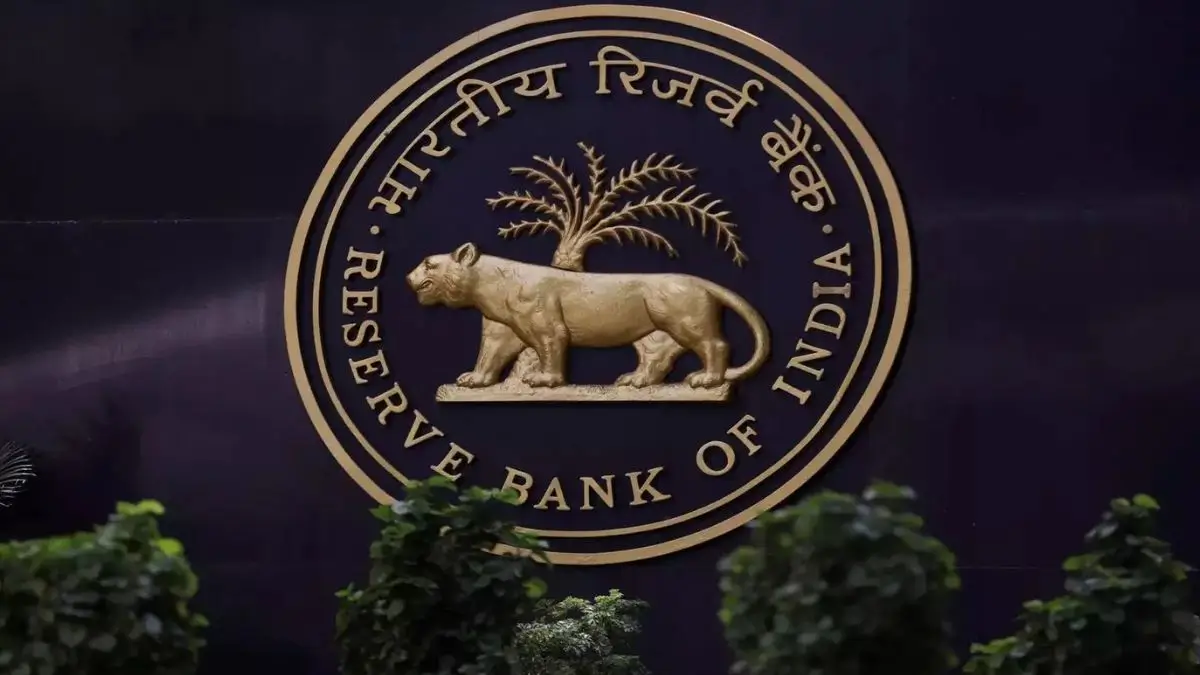Chhatrapati Shivaji’s Bagh Nakh Returns to India After 350 Years
Introduction
The historic weapon, Bagh Nakh, used by the legendary Maratha warrior Chhatrapati Shivaji Maharaj, has finally returned to India after 350 years. This significant event marks the restoration of a crucial piece of Indian heritage.
The Historical Weapon: Bagh Nakh
Bagh Nakh, which translates to “tiger’s claw,” is a weapon designed to fit over the knuckles or be concealed under and against the palm. It was famously used by Shivaji Maharaj to defeat the Bijapur Sultanate’s general, Afzal Khan, in a legendary encounter. The return of this artifact symbolizes the pride and valor associated with Shivaji’s legacy.
The Journey Back Home
The Bagh Nakh was housed in a museum in the United Kingdom for several centuries. Persistent efforts by the Indian government and heritage activists have finally borne fruit, resulting in its repatriation. The artifact will now be displayed at the Chhatrapati Shivaji Maharaj Vastu Sangrahalaya in Mumbai, allowing the public to witness a piece of history up close.
Cultural and Educational Impact
The return of the Bagh Nakh is not just a triumph for heritage conservation but also serves as an educational tool. It offers a tangible connection to India’s rich past, inspiring students and historians alike. Exhibitions and educational programs centered around the artifact will help inculcate a sense of pride and awareness about India’s historical achievements.
Government’s Role in Heritage Repatriation
The successful retrieval of the Bagh Nakh underscores the Indian government’s commitment to reclaiming cultural artifacts. This event is part of a broader initiative to bring back valuable items that were taken out of the country during colonial times. The government’s proactive stance sets a precedent for future efforts in heritage conservation.

Why This News is Important
Enhancing National Pride
The return of Chhatrapati Shivaji’s Bagh Nakh enhances national pride by restoring a significant symbol of India’s historical and cultural heritage. It reminds citizens of the valor and strategic brilliance of Shivaji Maharaj, fostering a deeper connection to their roots.
Educational Opportunities
This news creates educational opportunities for students and historians. By having access to such an important artifact, learners can gain a deeper understanding of India’s history, the Maratha Empire, and the techniques of ancient warfare. This can enrich the curriculum of history courses and inspire further research.
Heritage Conservation Efforts
The successful repatriation of the Bagh Nakh highlights the ongoing efforts in heritage conservation. It demonstrates the importance of preserving historical artifacts and the roles that governments and activists play in these endeavors. This can lead to increased support and funding for similar projects.
Historical Context
Shivaji Maharaj and the Maratha Empire
Chhatrapati Shivaji Maharaj was the founder of the Maratha Empire in western India in the 17th century. Known for his innovative military tactics and administration, Shivaji established a progressive and resilient state. The Maratha Empire played a crucial role in resisting Mughal dominance and fostering regional autonomy.
The Battle with Afzal Khan
The encounter between Shivaji Maharaj and Afzal Khan is one of the most celebrated events in Maratha history. In 1659, Shivaji used the Bagh Nakh to kill Afzal Khan during a meeting, demonstrating his strategic prowess and ensuring Maratha dominance in the region. This event is a testament to Shivaji’s leadership and combat skills.
Repatriation of Cultural Artifacts
The Bagh Nakh’s return is part of a broader global movement to repatriate cultural artifacts to their countries of origin. Many artifacts were taken during colonial periods and are now being returned as nations seek to reclaim their heritage. This movement is crucial for preserving and honoring cultural histories.
Key Takeaways from Chhatrapati Shivaji’s Bagh Nakh Returns to India After 350 Years
| Serial No. | Key Takeaway |
|---|---|
| 1 | The Bagh Nakh is a historic weapon used by Chhatrapati Shivaji Maharaj. |
| 2 | It has returned to India after being housed in a UK museum for 350 years. |
| 3 | The artifact will be displayed at the Chhatrapati Shivaji Maharaj Vastu Sangrahalaya in Mumbai. |
| 4 | The repatriation effort highlights the Indian government’s commitment to heritage conservation. |
| 5 | This event fosters national pride and offers educational opportunities related to India’s history. |
Important FAQs for Students from this News
Q1: What is Bagh Nakh?
Bagh Nakh, translating to “tiger’s claw,” is a weapon designed to fit over the knuckles or be concealed under and against the palm. It was famously used by Chhatrapati Shivaji Maharaj in the 17th century.
Q2: Why is the return of Bagh Nakh significant?
The return of Bagh Nakh is significant because it restores a crucial piece of Indian heritage and symbolizes the valor and strategic brilliance of Chhatrapati Shivaji Maharaj.
Q3: Where was the Bagh Nakh housed before its return to India?
The Bagh Nakh was housed in a museum in the United Kingdom for several centuries before being repatriated to India.
Q4: Where will the Bagh Nakh be displayed in India?
The Bagh Nakh will be displayed at the Chhatrapati Shivaji Maharaj Vastu Sangrahalaya in Mumbai.
Q5: What efforts were involved in the return of Bagh Nakh?
The return of the Bagh Nakh involved persistent efforts by the Indian government and heritage activists to repatriate this valuable artifact.
Some Important Current Affairs Links

















